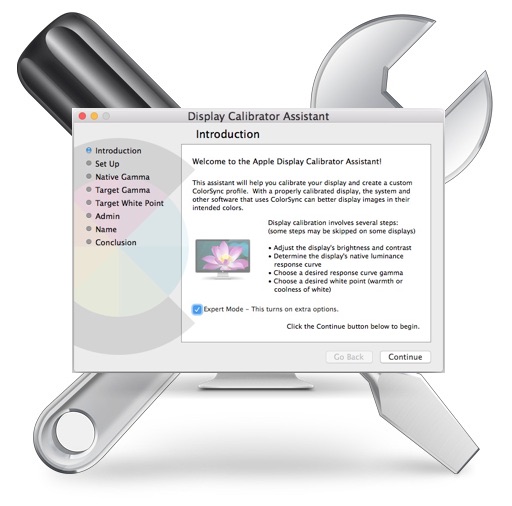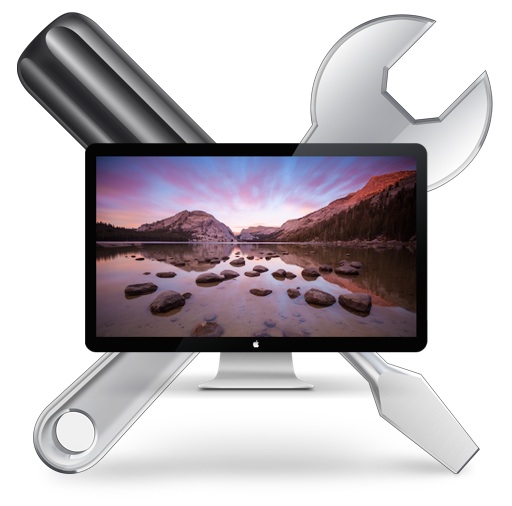

- BEST COLOR CALIBRATION TOOL FOR MAC HOW TO
- BEST COLOR CALIBRATION TOOL FOR MAC INSTALL
- BEST COLOR CALIBRATION TOOL FOR MAC MAC
When you’ve finished this, click Continue. Do this slowly, and take your time, because it’s a subtle change.

Follow the instructions and move the sliders until you cannot distinguish the Apple logo from the background. You’ll find two sliders and a square in the center of the screen. The next screen helps determine the display’s native lighting response. Set the brightness to the level that is comfortable.
BEST COLOR CALIBRATION TOOL FOR MAC MAC
If you have a Mac with an built-in display, you won’t have a contrast setting.
BEST COLOR CALIBRATION TOOL FOR MAC HOW TO
Click Continue.Įvery display panel is slightly different, and your lighting is different, so the next screen tells you how to set the contrast and brightness. When the assistant launches, you’ll notice that your display’s colors change a bit to the default settings. If you don’t press the Option key when clicking Calibrate, the calibration tool opens with fewer options if you’re going to do this, you might as well use all available adjustments. The Display Calibrator Assistant opens and walks you through the process. On the Color tab, press the Option key and click Calibrate. If you plan to do any photo editing, and you’re concerned about the fidelity of the colors you see on your display, it’s a good idea to turn this option off when doing those tasks. This adjusts the color during the day, according to the ambient light around the Mac.

On the Display tab of these settings, uncheck True Tone, if it is available on your Mac. To access this, start by checking that Night Shift is not on it’s in the Night Shift tab in the Display settings. MacOS includes an excellent tool for calibrating your Mac’s display. The Created date shows when you set it up if it’s older than your current Mac, or its display, go ahead and select the profile then click Delete Profile to remove it. Select a profile and click Open Profile to see some detailed information about that profile. If you’ve upgraded from one Mac to another, copying files from the older computer, you might find that an old profile, created for a different display, has been carried over. If you see a lot of profiles in the list with names like iMac or Color LCD, it’s worth checking their dates. You can check Show profiles for this display only to hide all the profiles that aren’t for your display. Some are very blue, others lean toward purple, and most probably don’t look right.īut you’ll probably find one called iMac (if you have an iMac) or Color LCD (on a laptop), which is selected. If you select one of the profiles and press the up-arrow or down-arrow keys to scroll through them, you’ll see how different your display will look. If you want the profiles to be available to all users on your Mac, add them to /Library/ColorSync/Profiles if you just want them to be available in your user account, or if you’re the only user, add them to the /Library/ColorSync/Profiles folder in your home folder.
BEST COLOR CALIBRATION TOOL FOR MAC INSTALL
However, if you work with photos, and need a specific color profile for paper for a printer, for example, you’ll be able to install these files.

These default profiles, with odd names, such as sRGB IEC61966-2.1, are specially designed for specific uses you can safely ignore them. Go to System Preferences > Displays, then click the Color tab, and you’ll see a list. Your Mac can store lots of color profiles, and you’ll find that it already has a handful. Color ProfilesĬolor profiles are settings files that tell your Mac how to adjust the color and contrast of its display. It’s easy to color calibrate your Mac’s display, and you can do so quickly by eye, or you can use additional hardware to get your colors exactly right. It does this by changing the intensity of the main colors - red, blue, and green - and setting the white point, or the neutral white color that you see when, say, you open a new document in a word processor. The calibration process tweaks a number of settings to get the colors and contrast on your Mac as accurate as possible. However, if you work with photos or videos, or even if you like to watch movies in the best possible conditions, color calibrating your display is essential. If you only use your Mac for browsing the Web, sending and receiving email, and working in a word processor, it’s probably not all that important for it to display accurate colors. How To How to Color Calibrate Your Mac’s Display


 0 kommentar(er)
0 kommentar(er)
